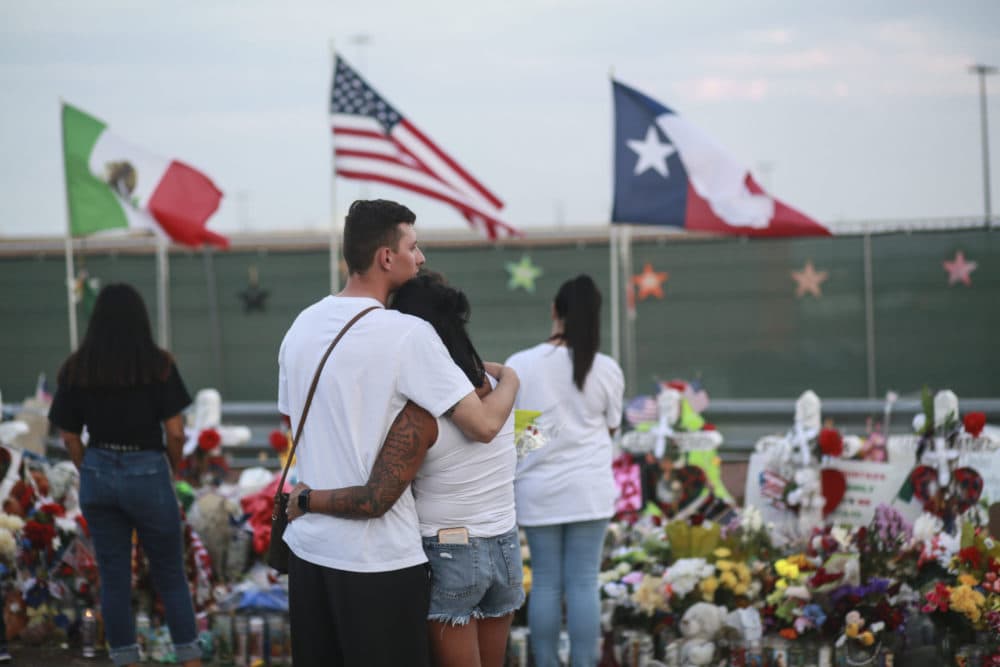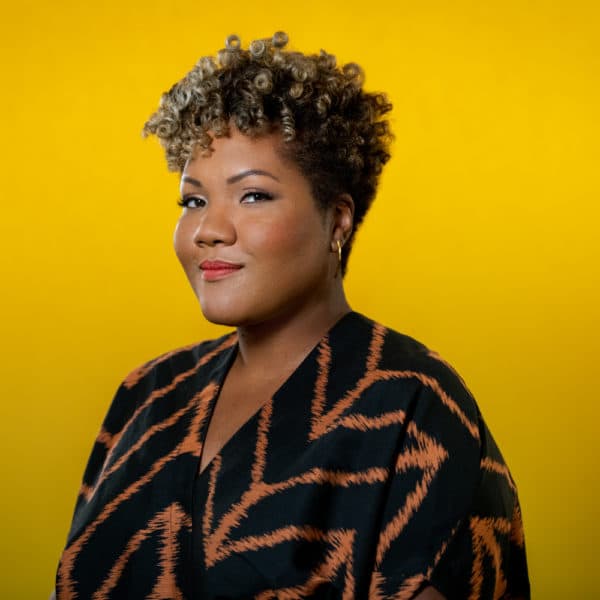Advertisement
The 'Forgotten' History Of Anti-Latino Violence In The U.S.

The rate of hate crimes against Latinos in the U.S. is at its highest in nearly a decade, according to an annual report by the FBI.
The report revealed 485 hate crimes against Latinos in 2018. That’s 58 more than reported the year before and surpassing those against Muslims and Arab Americans.
The FBI considers a hate crime to be a criminal offense motivated by race, religion, sexual orientation or ethnicity.
The U.S. has a long and largely forgotten history of violence against Latinos, says Monica Muñoz Martinez, an assistant professor of American studies at Brown University and author of “The Injustice Never Leaves You: Anti-Mexican Violence in Texas.”
When we think about violence against ethnic groups in this country, we tend to think about lynchings against African-Americans, Martinez says. But there’s also “a history of forgotten lynchings of Mexican Americans and Mexican nationals,” she says, in addition to state-sanctioned violence.
“So violence at the hands of police, of U.S. soldiers, in some cases people who were collaborating with vigilantes,” Martinez says. “So it's a broader history that is really urgent for us to remember, especially today with the rise of anti-immigrant, anti-Latino sentiment.”
Interview Highlights
On the Porvenir massacre against Mexican Americans in 1918
“The Porvenir massacre took place in January 1918, and it's a tragedy that was close, actually, in proximity in West Texas to El Paso, relatively speaking, to how big the state is. But it was a group of Texas Rangers, the state police, collaborated with some U.S. soldiers and local vigilantes to surround a ranching community, Porvenir. And in January 1918, 15 men and boys were massacred by the Texas Rangers. Despite investigations by the state, by Mexican diplomats and by the U.S. military, there [were] no prosecutions. So it's a case of state-sanctioned violence that is really profound and reminding us [not only] of the kinds of injustices that people experienced, but also the injustices that continue to remain in communities and were carried by descendants who fought the injustice and have been working for generations to remember this history.”
On how racial violence was part of an effort to consolidate white economic control in Texas
“The racial violence in the southwest, but especially in Texas, in the late 19th and early 20th century, targeted border communities, people who lived in places like Porvenir, places like Brownsville, border communities where people were living and thriving thanks to the life source of the river. So the Rio Grande that so many people knew about as a dividing line or as an international border 100 years ago, really united border communities. And so there were waves of Anglo migration that started after Texas independence, but also after the U.S.-Mexico war in 1848. And in part of what led to the survival of Anglo settlers and colonizers was the violent displacement of indigenous people, but also of land-owning Mexicans. And in this case, after the massacre, the victims were portrayed as bandits and as squatters. But research has shown that they were landowners who were making it profitable because they had successfully learned to irrigate the land. And so this is a history of colonization that helps to give us some historical perspective into a truthful accounting of this kind of violence.”
Advertisement
On how anti-Latino rhetoric influences hate crimes
“One hundred years ago, anti-immigrant and anti-Mexican rhetoric fueled an era of racial violence by law enforcement and by vigilantes. But it's also important to remember that this kind of sentiment, this rhetoric, also shapes policy. So 100 years ago, it shaped anti-immigrant policy like the 1924 Immigration Act. It also shaped policies like Jim Crow-style laws to segregate communities ... and targeting Mexican Americans especially. There [were] efforts to keep American citizens, Mexican Americans, from voting. But there were also forced sterilization laws that were introduced, and U.S. Border Patrol was established in 1924. Our policing practices, our institutions today have deep roots in this period of racial violence.
"And something else that's, in terms of context, important to remember is that this was a period of violence that was celebrated as progress. And so it was celebrated as an era of nation-building in the United States. The U.S. government praised the militarization of the border and praised U.S. soldiers for showing strength in their ability to secure the border. And so it was an era in which the U.S.-Mexico border was created as a dividing line.”
On how the militarization of the border is still felt today
“What we are seeing today is that you see the border being portrayed as a dangerous place, and people who live near the border as suspicious and dangerous. Some of the same political rhetoric that was used 100 years ago to cause fear is returning. Although I would say that it never really went away. It's just that today, thankfully, Americans ... finally have their eyes open to the kinds of injustices.”
On the importance of teaching this history so it doesn’t repeat itself
“Well, it's difficult to teach these histories on their own. But it's also deeply disturbing because students make connections. It prompts conversations about police violence today, police shootings on the border by Border Patrol agents. One of the cases that I write about in my book is the shooting of Concepcion García, who was a 9-year-old girl who was studying in Texas and became ill and crossed the Rio Grande into Mexico with her mother and her aunt to recover her. She was shot by a U.S. border agent.
"So when we teach these histories, it's important to know that these kinds of injustices have lasting consequences, not only in shaping our institutions, but shaping cultures and societies. When we think about the impact of some of the cases from 100 years ago continuing to weigh heavy on people a century later, it's a warning to us that we must heed. And we will have to work actively as a public. If we don't call for public accountability, these patterns of violence are going to continue, and we will be working for a long time to remedy the kinds of violence that we're seeing.”
Ciku Theuri produced and edited this interview for broadcast with Kathleen McKenna. Samantha Raphelson adapted it for the web.
This segment aired on November 25, 2019.
